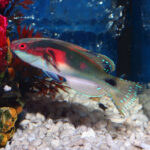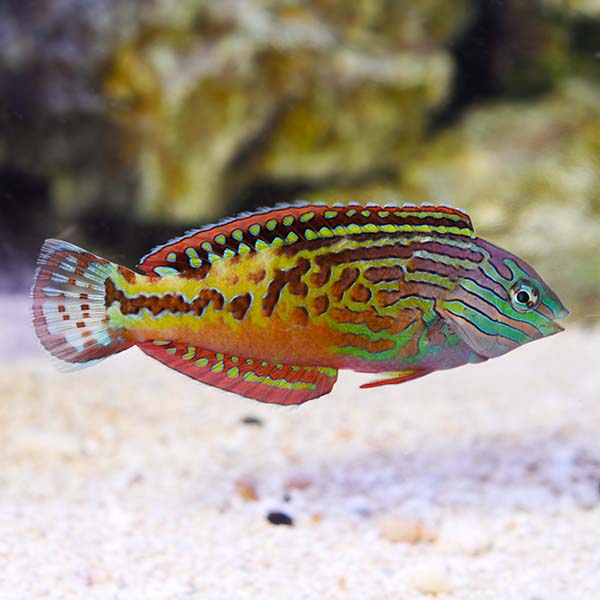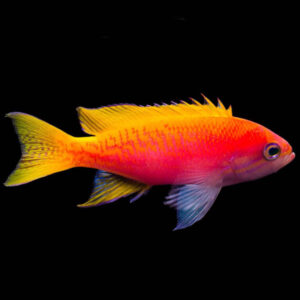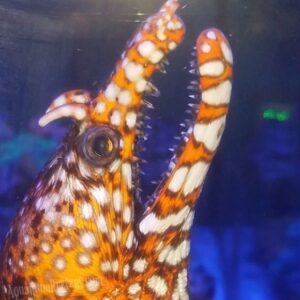Description
Peacock Wrasse Male, Macropharyngodon bipartitus, also go by the name Blue Star Leopard Wrasse. Like all members of the Macropharyngodon genus, males and females are sexually dimorphic, as they display different colour morphs.
As the names suggests, these fish look amazing. Intricate patterns and a mix of colours cover their slender form. Male Peacock Wrasse have gorgeous jade green bodies. Pinkish scribbles coat them from nose to tail, and their fins sport red flecks. The Female wrasse differ greatly. Their bodies show pink, orange and red hues. Large dark splodges mark their bellies and sides.
Macropharyngodon wrasse are found in the tropics and are all known as leopard wrasse. The etymology for the genus is ‘big throat teeth’, owning to the large molar and canines hidden deep in their throat.
Peacock Wrasse Male, Macropharyngodon bipartitus Ecology:
These Fish range from: South Africa to Zanzibar, and from Oman to Yemen. They also occur around Islands in the west Indian ocean. Namely: Aldabra, Rodrigues, Réunion island, Mauritius, Sychelles and the Maldives.
They live in a mix of sheltered habitats, such as coral reefs, lagoons, sandy or rocky areas. The complex structures in the habitat help the wrasse avoid predation. Failing that, male Peacock Wrasse quickly vanish by burying themselves in the sand bed. These fish feed on shelled plankton, like foraminifera, Arthropods and snails.
These Wrasse live in social groups with one top male to a few or more females. Peacock Wrasse are also protogynous hermaphrodites. Which means when the dominant male perishes, the largest female in the group will turn male. It will then become the new boss male. As a result, all juvenile Peacock Wrasse, are in fact immature females.
Blue Star Leopard Wrasse In the Aquarium:
It is important to copy the natural environment by providing plenty of nooks and crannies. There should also be a good sand bed for the wrasse to hide and sleep in. Hobbyists should get a jump guard to stop any unfortunate losses.
Peacock Wrasse Male do best when fed a varied diet. They will accept enriched frozen mysis shrimp and enriched frozen brine shrimp. They will also devour live foods, such as copepods and amphipods, that can be cultivated in attached refugium. Over time they will accept high-quality pellet or flake. We adapt all our wrasse to aquarium life before they leave us. We focus on their health, and most are eating a good quality flake food and/or pellet, such as JBL Maris, before being offered for sale.
The Fish pictured here are representative only and the livestock you receive may vary in pattern, coloration, and shape.









Reviews
There are no reviews yet.